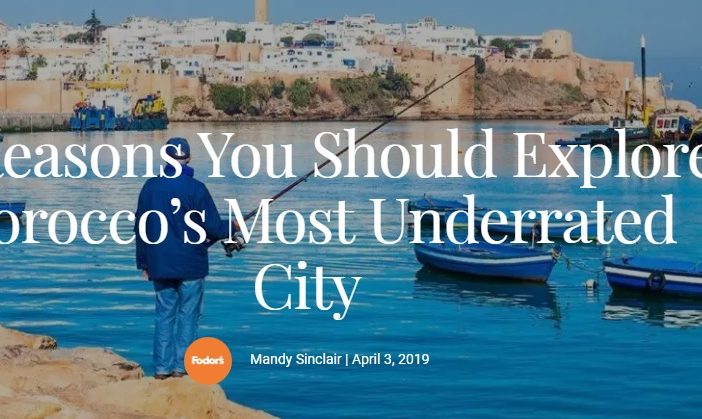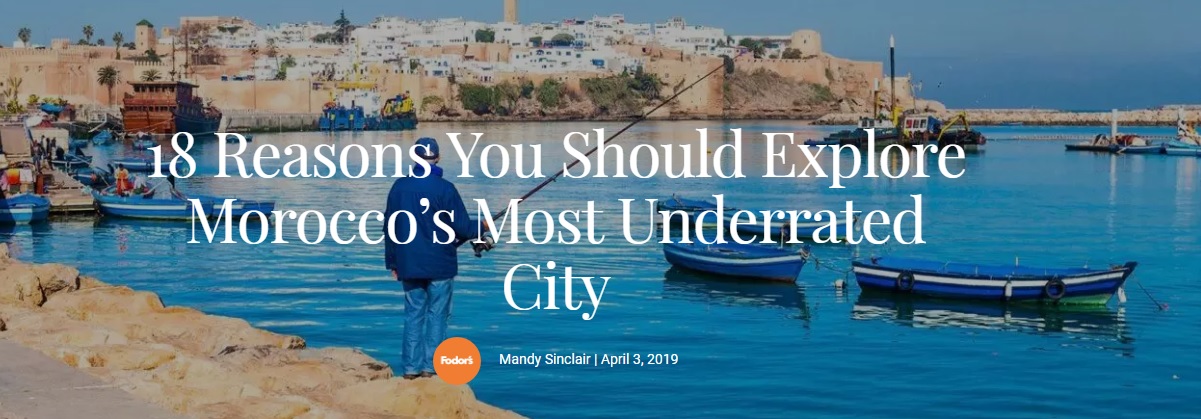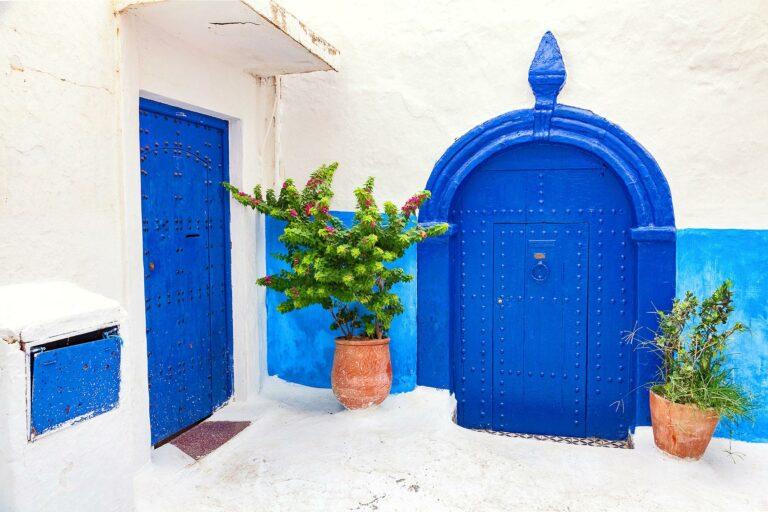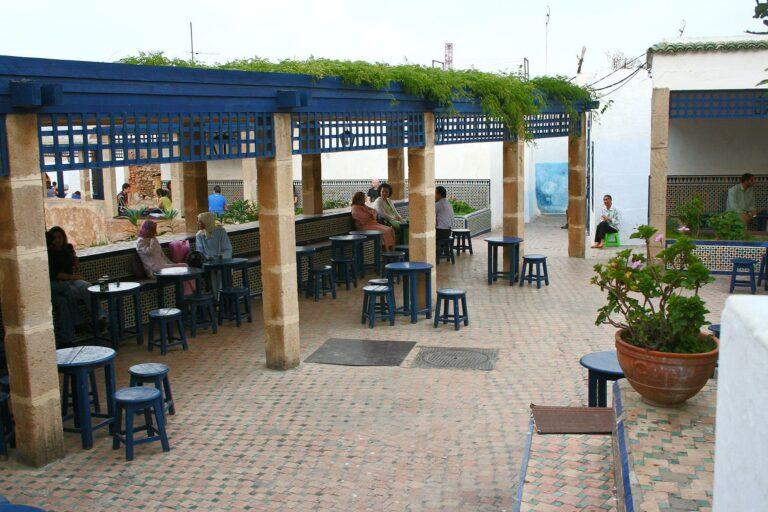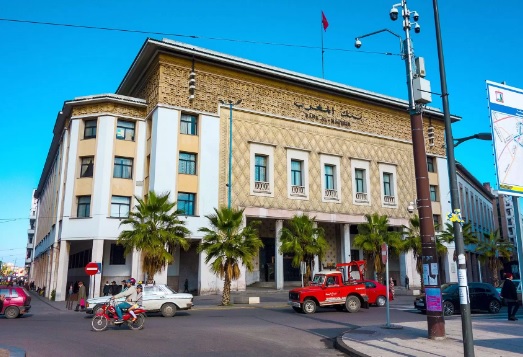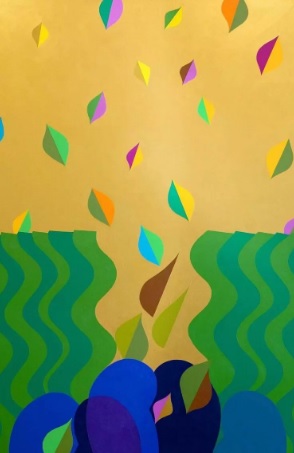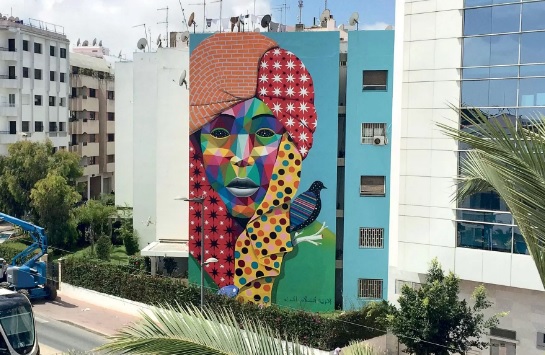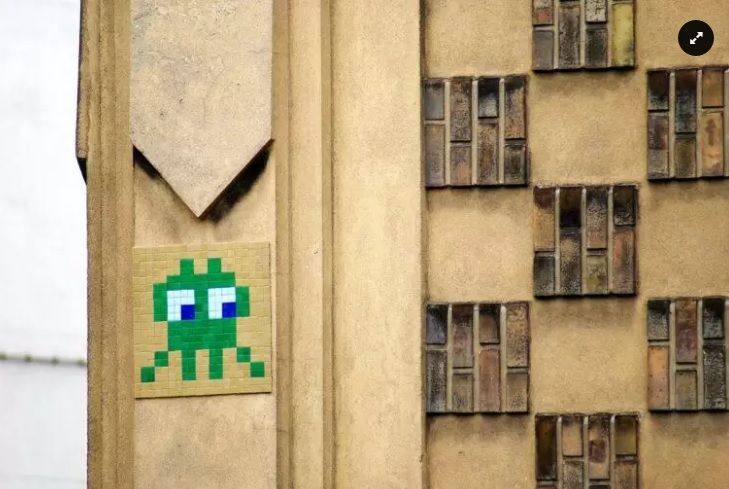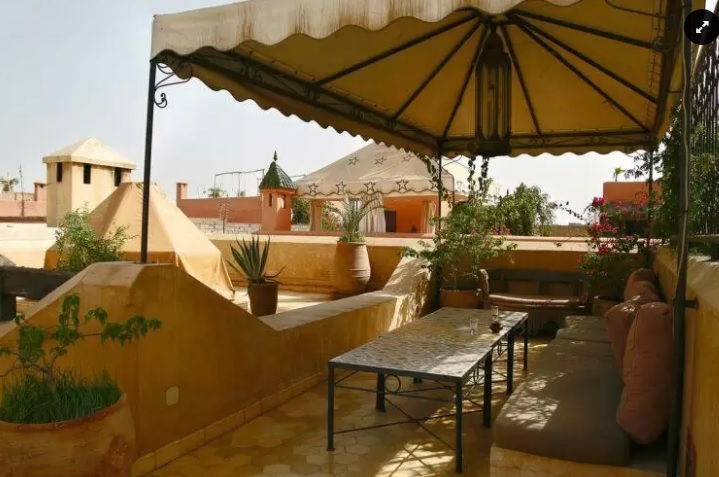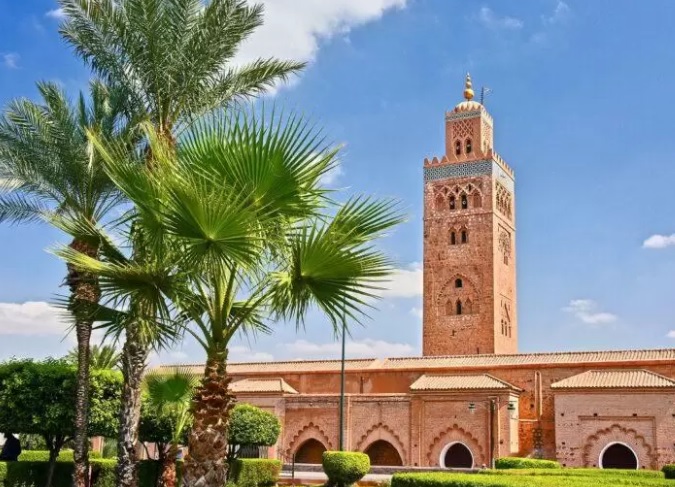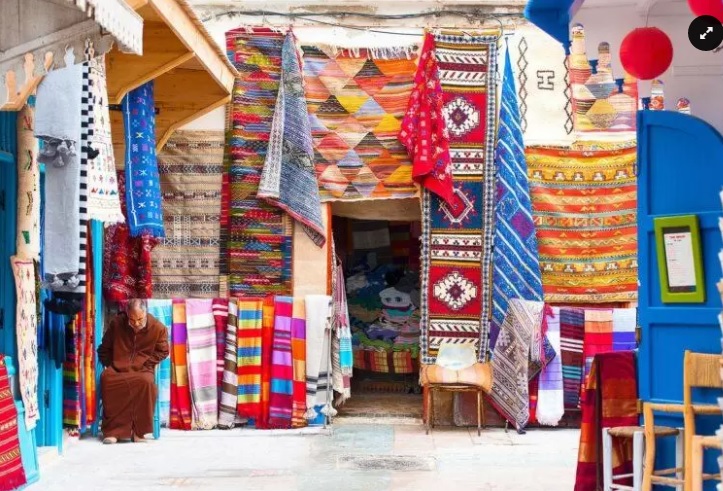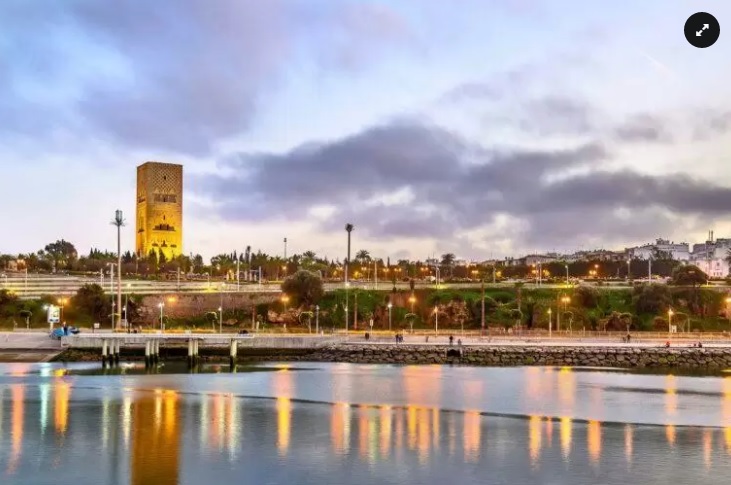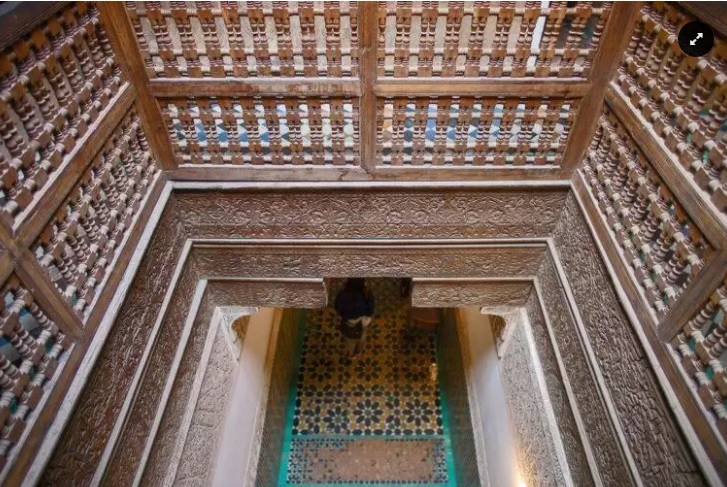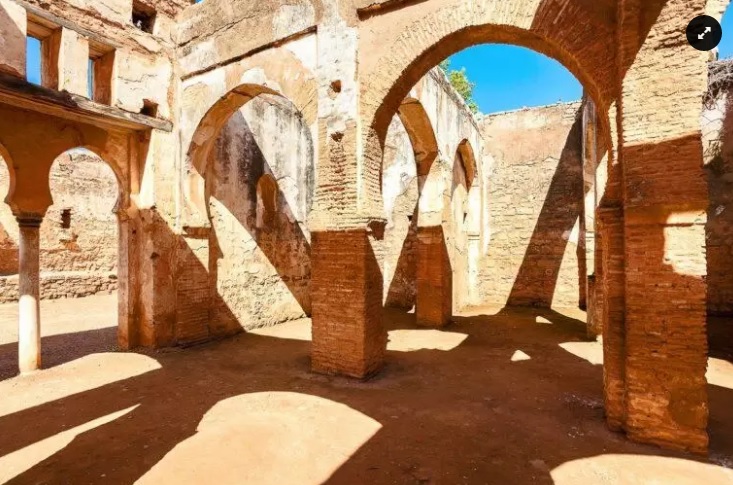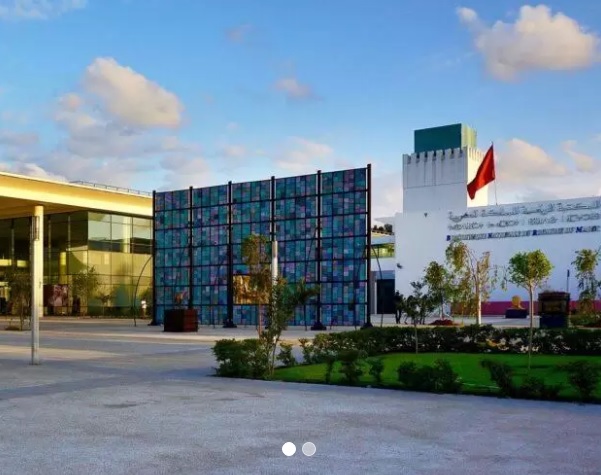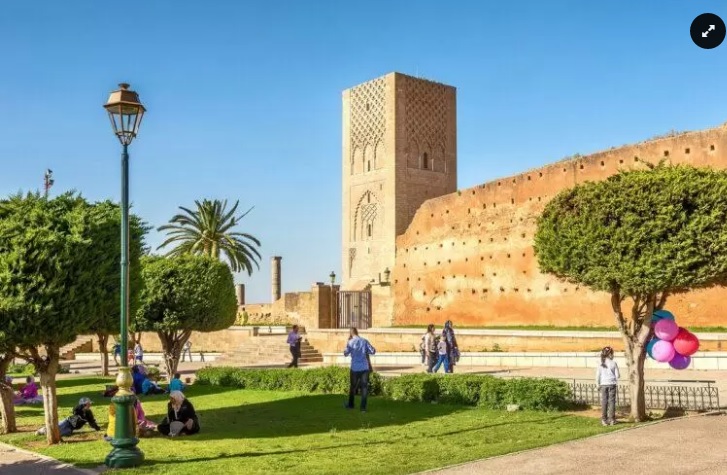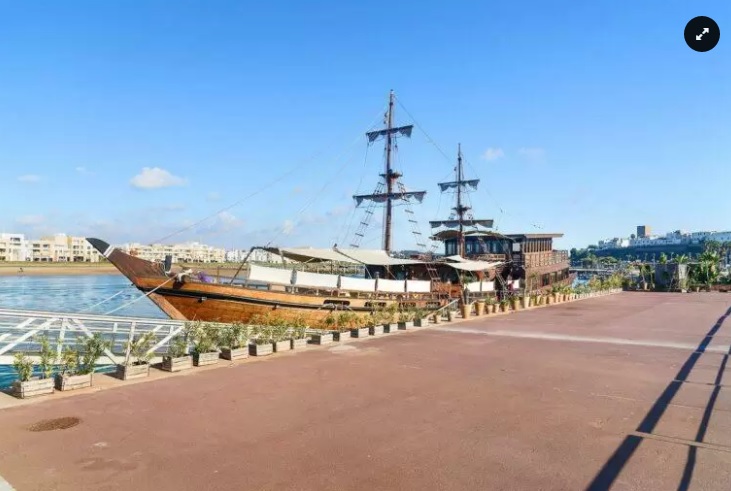Fodor’s Travel
There’s more than one blue city in Morocco.
Think Morocco only has one blue city? Guess again. The capital city Rabat, with its blue-washed Kasbah Oudaya and picture-perfect alleyways, has all the charm of nearby Chefchaouen, but without the crowds. With world-class cultural institutions, Roman ruins, touches of Andalusia, and a burgeoning arts scene it’s difficult to understand why the capital of Morocco is often overlooked by travelers.
Once home to Phoenicians, Romans, Almohad and the Merenid dynasties, today Rabat is a calm city where travelers wander hassle-free. But there are a few more reasons why you’ll want to add this capital city to your Morocco itinerary.
Explore Another Blue City
The alleyways of little-known Kasbah Oudaya, painted in a slightly darker blue than nearby Chefchaouen in northern Morocco, have an Andalusian feel due to the fact that the houses were built to accommodate Muslims fleeing the Spanish region during the Inquisition. Entering through the impressive Andalusian-style stone 12th century Bab Oudaya (Oudaya gate) gives way to the oldest part of town that remains largely residential with locals and visitors wandering leisurely through the picturesque walled city. But really, you’ll just want to snap your vacation selfies without the crowds of other more touristic towns in Morocco. As it’s the oldest part of town, Mosque el-Atiqa, the oldest mosque in Rabat stands here, is located just beyond the main gate.
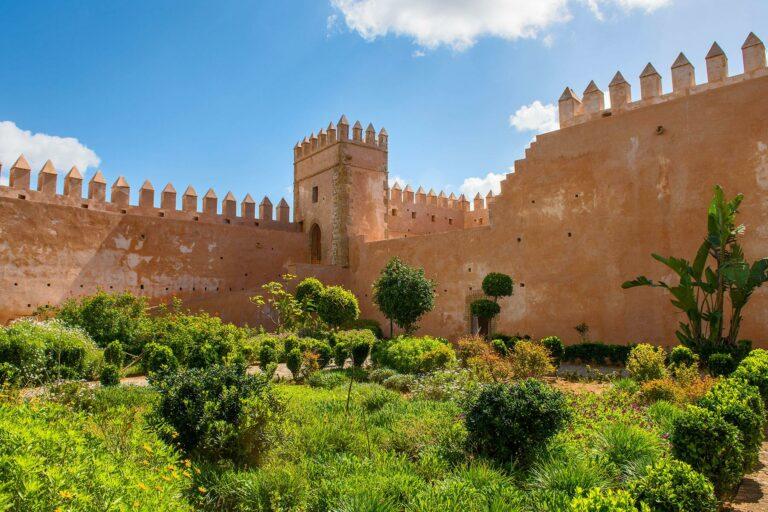
A Touch of Andalusia in the Old City
While the city doesn’t have the hustle and bustle of other popular destinations in Morocco, the peaceful Andalusian Gardens in the Kasbah Oudaya provide a welcome retreat in heart of the old Kasbah district where young lovers meet and families roam. But the gardens haven’t always looked this way. Once part of the former royal palace (which now houses the jewelry museum), the French laid out the gardens to the current state we find them in today. Nip out the side entrance to grab a seat at Café Maure overlooking the Bou Regreg River separating Rabat and neighboring Salé. While the simple but atmospheric café serves limited drinks options (café noir and mint tea), don’t be surprised if you’re presented with a tray of traditional Moroccan sweets available for purchase by the piece to accompany the jolt of caffeine.
And a Bit of Andalusia for All Senses in the New City
The Andalusian influence doesn’t stop at the gardens. Head downtown to Casa José, a Moroccan chain of tapas bars with locations in Casablanca and Marrakech, where flamenco shows and Spanish tapas are served up to a well-heeled crowd. Enjoy a glass of Moroccan wine (yes, that exists in Morocco and in fact production happens nearby) with a traditional Spanish tapas including calamari, patatas bravos, and even seafood dishes, a specialty of the small chain.
Wander Through the Palm-Lined Art Deco Downtown
Built during the French protectorate era and lined with palm trees, the downtown core (particularly Avenue Mohamed V) is home to 1930s era architectural gems including the Moorish-style Banque al Maghreb (now the currency museum) and the post and telegraph office across the way. You’ll even find the national parliament building further along the avenue heading towards the medina. A wander here is pleasant and coffee breaks under the arcades are enjoyable, especially on Sunday afternoons or when locals gather for an after-work coffee downtown.
Head to the Patisserie Majestic for a sweet treat and find a shady spot to watch the world go by. Nearby Art Deco cinemas Renaissance and Cinema Royal, shop fronts, and apartment blocks are perfect for admiring, especially for those with an interest in architecture and history.
You Won’t Expect to Find This Architectural Gem in Rabat
Opened in 1922 during the French Protectorate era in Morocco, the unexpected but impressive all-white art deco St. Peter’s Cathedral is an immense structure where worshippers still gather for daily mass (particularly on Sundays) in the heart of downtown. The exterior detailing blends perfectly with the local environment, incorporating local techniques that resemble carved stucco and intricate tile work. Wander around the back of the church where the stained glass resembles the Moroccan zellige pattern. The spires add a unique touch to the Rabat skyline that’s dotted largely with apartment buildings and mosques.
An Art Gallery Fit for a King
In the center of town sits the Mohamed VI Museum of Modern and Contemporary Art, housed in a modern, impressive building that should be atop every contemporary art lover’s list. The permanent collection featuring the artworks of 200 Moroccan artists, including Mahi Binebine and Mohamed Melehi, is comprehensive and provides great historical and cultural insight into the art scene in Morocco. Temporary exhibitions change regularly and in the past have included a retrospective on Picasso in Africa. The museum also hosted the first exhibition of Giacometti in Africa.
When the City Becomes an Open-Air Street Art Museum
Having visited the contemporary art gallery, hit the streets and discover the street art scene that’s taking over Rabat. With the help of Jidar Toiles des Rue festival international artists have left their mark in the form of large-scale murals throughout the city. The Sahara Prince mural is easily identifiable as a piece by Mexican street artist Okuda. Peruvian street artist Decertor adds an additional pop of color near the botanical gardens with his untitled and ever so colorful mural of a local girl who wandered past and provided the starting point for the mural.
Invader Invades Rabat
Scope out some of Invader’s 20 signature mosaics installed throughout the city following the artist’s visit in 2017 and score points for your efforts. Head to the medina where several mosaics remain, including a “Space Invader” inspired alien looking suspicious inside a tagine, a belly dancer performing for the character, and another dressed in traditional attire while watching the world go by in the medina. You’ll also find mosaics in the new town including across from the St. Peter’s Cathedral and even Invader sunbathing by the coast.
Dare to Push Open the Doors of the Medina
You never know what lies behind the doorways in the medina of Rabat, and what lies behind the doorway at 7-9 Impasse Caïd Bargach is a palace you won’t soon forget. Built in 1815 and once housing the stately Pasha of Rabat, Riad Euphoriad. The unassuming entrance with a beautiful fountain and interiors that recall an Andalusian past are just the beginning. Take the elevator up to the rooftop terrace of this boutique hotel to swim in an infinity pool overlooking the historical Rabat medina. The rooms and suites are equally luxurious and incredibly spacious. Be aware that after staying here you may never want to leave.
Spot the Similarities Between the Koutoubia Mosque in Marrakech and Hassan II in Rabat
The Almohad Dynasty had grand visions for the Hassan II tower in Rabat—to make it the second-largest mosque in the world at the time of construction. Sadly the 60-meter minaret was abandoned and the minaret stands strong today at 44 meters tall and surrounded by ruins left behind after an earthquake destroyed the mosque. Nevertheless, the site remains one of Rabat’s best-known historical sites. Spot the difference between Hassan II tower in Rabat and the Koutoubia Mosque in Marrakech (and even the Giralda in Seville), both built by the Almohad Dynasty that ruled over a kingdom that expanded to Andalusia.
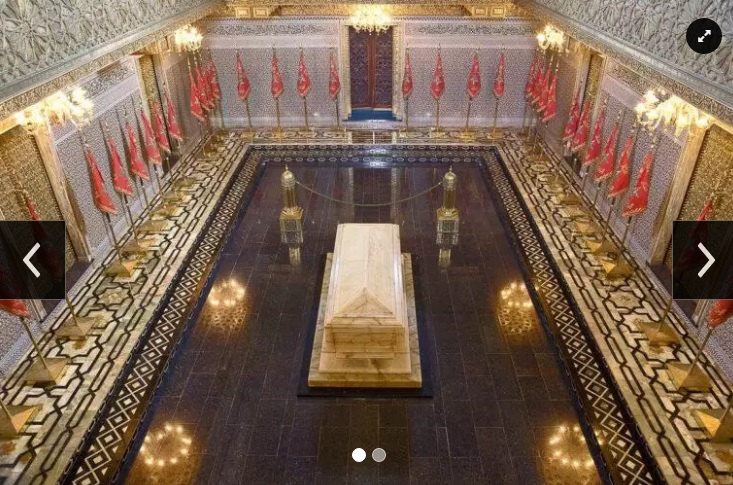
There Are Two Kings Resting Here
Pay respects to the current King of Morocco’s grandfather the late Mohamed V and father (Hassan II) during a visit to the Mausoleum of Mohamed V. The whitewashed building constructed using traditional architectural elements–impressive zellige tile work, carved plaster, and intricate arches–stands behind the Hassan II Tower. Respectful attire is required to enter in the gallery where visitors can look down over the tombs.
Traditional Meets Contemporary on the Quai des Createurs
After a wander through the Rabat medina where shopping is much more laidback than nearby Fez or Marrakech, head to the Quai des Createurs along the marina on the Salé side (where the rowboats drop passengers) where young and emerging designers have set up shop selling modern Moroccan textiles, fashion, and interior designs. You’ll find everything from Scandinavian-inspired interior designs to both casual and haute couture contemporary Moroccan fashions. Grab a coffee at one of the cafés overlooking the Bou Regreg River while contemplating any last-minute purchases.
Watch the Sky Light up From the Banks of the Bou Regreg
As the sun sets and the call to prayer sounds out, the sky lights up in magical colors bringing a fairy-tale-like feeling over the walled city of Rabat across the river dotted with little fishing boats. Grab a seat on the shores of the Bou Regreg River, Salé side. Find a seat either on a park bench or take a cue from the locals and settle on one of the rocks along the quay as the sun sets on another day in Morocco.
You’ll Wish You Could Study Here
While the mosaic tiling on the floor upon entering shows sign of a once active Koranic school where students gathered for religious studies, the gorgeous turquoise, black, and white zellige lining the gallery walls of the Medersa Abou el Hassan in Salé lead to an impressive prayer hall. Now open as a historical site, step inside to see some of the finest regional craftsmanship including carved plasterwork, cedar wood, and zellige tilework before heading up to the second-floor dormitories that housed students studying at the prestigious institution. Though certainly smaller than the medersas in Fez or the Ben Youssef in Marrakech (currently under renovation), few visitors stop by, making a visit rather pleasant and, on occasion, private.
Wander Where Dynasties Roamed
Step back in time, way back, and wander amongst the overrun ruins of Chellah with the assistance of a local guide (available for hire upon arrival). Established as the Roman city of Sala Colonia in 40 AD it was then made a necropolis under the Merenid Dynasty during the 14th century. The site contains a blend of Roman ruins and Islamic influences. Storks nest above the ruined minaret, while the Arch de Triomphe entrance leads toward the forum and Jupiter Temple and Pool of the Nymphe, which is said to still be used today for spiritual healings. Grabbing a taxi here is no problem, but given its location slightly outside of the medina you may want to negotiate for the taxi to wait while you visit the site.
More Than Just a Library
Street art lovers will want to make their way over to the National Library of the Kingdom of Morocco where, with the help of the Montresso* Foundation’s Off the Walls program, Salé native Tarek Benaoum has left his mark behind with a colorful and meaningful mural. Inspired by a Moroccan style of melodic poetry called melhoun, Benaoum has used script and symbols from various languages to recreate the poem “Dahbia” by poet Annejar. Inside, the library holds national treasures and hosts regular cultural events.
Escape the Urban Buzz
Grab a picnic from one of the nearby bakeries and enjoy some solitude in the experimental botanical gardens just minutes away from the city center. Spread out on either side of Avenue de la Victoire, the gardens reopened in 2013 and feature a variety of tropical plants as well as various types of succulents. Wander along the wide pathways, admiring plants from across the globe or seek shade on one of the benches in the Andalusian-style gardens and listen to the splashing fountains. Don’t miss the gardens in spring when the aromatic orange trees are in blossom.
Having a Glass of Local Wine Doesn’t Get More Atmospheric Than This
It’s hard to miss Le Dhow, a restaurant and lounge, docked just outside the Rabat medina and a short walk down the hill from the Oudayas Kasbah. The large wooden boat traditionally used to transport goods in Africa and the Middle East is an integral part of the nightlife in Rabat and is popular with well-heeled locals and expat community. Sip a mint tea and enjoy the views of the old medina and neighboring Salé in the coffee shop area or head downstairs to the lounge area after the sun sets to the dance the night away.




